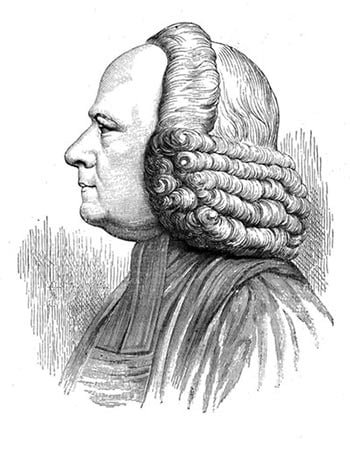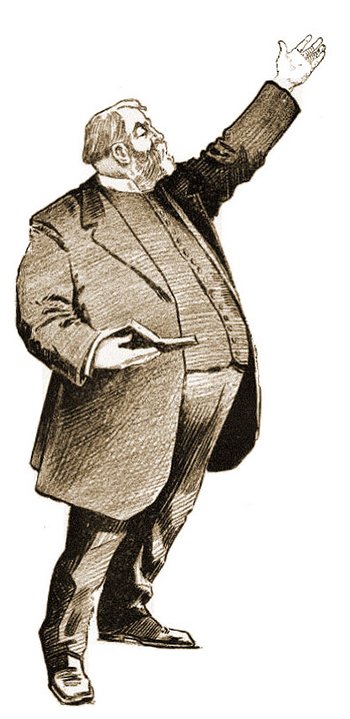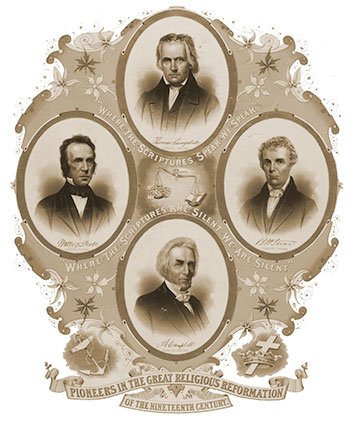The Great Awakening in America
George Whitefield

George Whitefield
The first Great Awakening in America resulted in a quantum leap forwards in the life of the church and the nation. It was a psychological earthquake which reshaped the religious, social and moral landscape of Colonial America and determined its destiny for the next two centuries. The rebirth of Western Christian culture can be traced back to those men and women who carried the revival fires across America and Europe during the twenty years of 1727-1747.
The results in America were staggering. At least 50,000 souls were added to the churches of New England, out of a population of about 250,000. It had the same effect in the Middle States, ultimately affecting over one hundred towns. Hundreds of new churches were planted, the ranks of serving ministers swelled, Biblically-based schools and colleges multiplied, works of love and mercy abounded, missionary impetus transported the message trans-nationally – revival had come.
George Whitefield – The English missionary
This revival began with the Theodore Frelinghuysen, a Dutch reformed Pietist, and was spread to the Scottish-Irish Presbyterians under the ministry of Gilbert Tennent. Tennent’s father, William, founded the famous ‘Log College’, which later became the Princeton University. The fire leapt over to the Baptists of Pennsylvania and Virginia before the extraordinary awakening that began in Northampton, Massachusetts, under the ministry of Jonathan Edwards in December 1734.
But the main carrier of revival fire was a young Englishman called George Whitefield. What an unlikely candidate for this work he was! His life will forever stand as a testimony to God’s ability to transform anyone who is weak, insignificant and despised and make them highly useful world-changing, life-producing individuals for the advance His cause.
George Whitefield was born and raised in Gloucester, England, in the most difficult circumstances. His father, a public tavern owner, died when George was two and his widowed mother re-married eight years later, but the relationship was plagued with grief and ultimately ended in divorce. Childhood measles left him with a squint for the rest of his life. Despite being raised amongst the tavern’s drunks, pimps and robbers, in poverty, being made fatherless, enduring a broken home and experiencing personal sickness, he was a fun-filled, if somewhat mischievous boy. At school he had a record of truancy but also a reputation as an actor and orator, with particular skills in mimicking ministers!.
At 15 years of age George persuaded his mother to let him leave school because he saw little value in education. He reconsidered this at 17 and went to university at Oxford.
The influence of friendships
At Oxford he became serious about spiritual things and joined the ‘Holy Club’ with the Wesley brothers, who became life-long friends. The group was not evangelical but was more for seekers and enquirers after true religion. The Wesleys’ seriousness of devotion provoked him to go deeper with God and he was the first in the group to recognise the difference between a legalistic religion and experiencing an inner change through the new birth in Christ. Nevertheless it took him a full year to make the transition from asceticism and human works designed to earn God’s favour, to receiving forgiveness and love by the unmerited grace of God.
He wrote, ‘Oh what joy – joy unspeakable – joy full and big with glory was my soul filled when the weight of sin came off, and an abiding sense of the pardoning love of God and a full assurance of faith broke in on my soul.’ After receiving ordination as a deacon in the Church of England in 1736, he began preaching on the necessity of the ‘New Birth.’
First showers of revival blessing
George Whitefield’s first sermon was preached in his home town and his great authority was immediately evident to all. He said, ‘I was enabled to speak with some degree of gospel authority. Some few mocked, but most seemed for the present struck; and I have since heard that a complaint was made to the bishop that I drove fifteen mad the first sermon!’
After a brief pastorate in Dummer, Hampshire he was encouraged by the Wesleys, to visit the colony of Georgia in North America, to assist in the care of an Orphan House which had been set up near Savannah for the children of colonists. He sailed in 1737, aged 23, and stayed for a year, returning to the States for the second of seven visits in 1739. During these first two visits he was led to begin open-air preaching and remarkable scenes began to accompany his ministry in Britain. Thousands flocked to hear his irresistible eloquence and engaging fervour. Hundreds were converted as they listened.
George Whitefield’s Return to America

Artists impression of George Whitefield preaching
Since late 1735 the New England revival had begun to decline. But Whitefield’s arrival heralded the second wave of blessing. He took it to heights it had never before attained, inspiring a host of others to engage in revival work.
His great and sudden fame had preceded him and he was in immediate demand. He began preaching in Philadelphia at once and thousands flocked to hear him. The population of the town did not exceed 12,000 souls, yet his initial audiences numbered from 6,000 to 8,000!
He then embarked on a two year preaching itinerary which harvested a multitude of souls in every location. At just 25 years old he was aptly called ‘the boy preacher!’
His audiences grew progressively as he moved around the nation until he was captivating audiences of 20,000 and then up to 30,000! What Bishop Ryle said of his ministry in London was no less true here, ‘Whether on week-days or Sundays, wherever he preached, the churches were crowded, and an immense sensation was produced. The plain truth is, that a really eloquent, extempore preacher, preaching the pure gospel with most uncommon gifts of voice and manner, was at that time an entire novelty in London. The congregations were taken by surprise and carried by storm.’
In just one six-week tour at this time he preached over one hundred and seventy-five sermons to tens of thousands of people, leaving the region in a spiritual upheaval. It remains one of the most remarkable periods of American Christianity on record. His preaching ‘in season and out of season’ approach encouraged evangelical ministers of all denominations to follow his example. His free use of natural gestures, illustrations, and a more extemporaneous style permanently altered American evangelical preaching. He was also a preacher of extraordinary power and possessed a supreme ability to hold audiences, attracting people from every rank and station in life.
Benjamin Franklin, who estimated that Whitefield could be heard clearly by up to thirty thousand people at one time wrote in his journal, “From being thoughtless and indifferent about religion, it seemed as if all the world were growing religious, so that one could not walk through Philadelphia in the evening without hearing Psalms sung in different families of every street.”
Of this period William Conant writes, “The preaching of the Gospel was attended with the most wonderful power, in every part of New England, and revivals gave new life and multiplied numbers to the churches throughout New England, and in the Middle States.
The rest of George Whitefield’s American ministry
Each of George Whitefield’s subsequent visits (1744–1748, 1751–1752, 1754–1755, 1763–1765, 1769–1770), followed the same extraordinary pattern, until his death in Newburyport, Massachusetts, in 1770.
The benefits were immense. Churches were packed once more, the moral climate was transformed, the ministry was crowded with converted men. At the time of George Whitefield’s third visit to America, 1744 to 1748, there were not less than twenty ministers in the vicinity of Boston, who confessed that they had never been converted until he came in 1740. Schools and colleges began and churches formed a unified movement, an evangelical network of revivalism that transcended denominational barriers.
In total Whitefield spent nine years in America taking a full two years to sail the Atlantic! He rose daily at four for devotions, often preached twice a day and three times on Sundays. He was sincere, dedicated, single-minded and always about his Master’s business. Only such a man could have impacted the American nation as he did.
Lord, raise up a dozen Whitefields in our day!
Tony Cauchi
For further research:
The First Great Awakening A comprehensive overview.
On this site:
Introduction
The Great Awakening – Jonathan Edwards
The Great Awakening – Moravians



